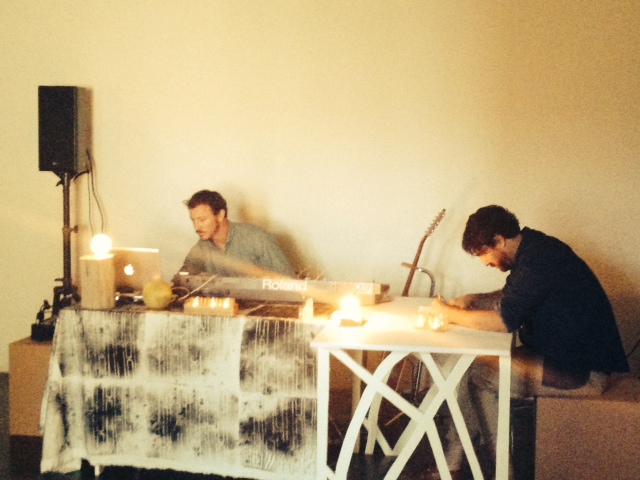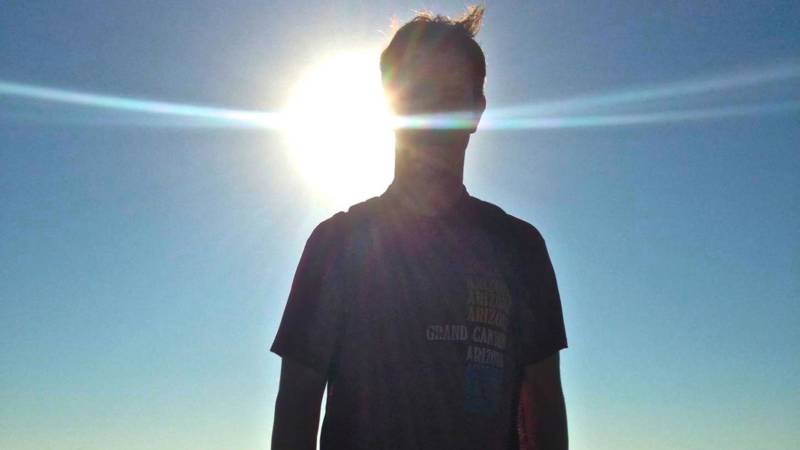This is the collaboration with Paul Clipson that we did some time ago. I’m always thrilled to work with Paul. Working solo in the context of his films brings out something different in my own work. It’s an opportunity for me to try new things, it’s not just me in a room playing; it’s me in a room playing with his films, and those things coming together produces a third thing. Dialectical synthesis! [I envision this piece as] sort of an expanse at night. The way that sometimes in the evening, you have less horizon, and the horizon just sort of becomes forever because you’re not seeing it. In an abstract way, that’s sort of where I was going with this piece.
“On Leaving”
Suggested vista: A stroll along Ocean Beach at dusk surrounded by fog
I do soundtrack work, and I was working on a film in 2013, and wrote this as a potential for that film. Then I re-recorded it and changed a few things around. Being born and raised here, and feeling deeply rooted in the visual landscape of California… it’s so in my blood. It finds its way into my music, into everything, into my sensibility as a person. And for sure this [piece] is tied to that. It’s so sentimental. And I’m okay with going there sometimes. I knew that about it, and that’s why finding the right home for it was so important to me, to contextualize it in a way that didn’t take it over the edge. Somehow, this piece following “Other States” has the right feel, to allow it to be what it needed to be.
“For Western Skies”
Suggested vista: Driving down the Pacific Coast Highway on a crisp, clear day
It’s doesn’t get any more self-consciously “Western” than this. [laughs] This piece is all about being Californian, and the West in genera… the West as a concept. This was one of the only pieces that I recorded specifically for this release. It was written with a lot of intention to push myself further along with my 12-string compositions, which is what this guitar is. This song is like a train, its own little railroad train. I was looking for titles for it — I found myself on some wormhole of looking various Western railroad names — but then it became apparent that that was almost cliche [laughs]. But it definitely elicits the West in general for me.
“Mineral Springs”
Suggested vista: A gentle hike through a shrouded, lively redwood forest
The bird in this song sung at night in our backyard for two months straight. It came shortly after my partner’s mother passed away. And her nickname was “Birdie.” There was just something moving and beautiful about this bird that was keeping us up all night [laughing] — I said, You can’t fight it, so why not record it? Mineral Springs was one of the sites that I went to with James Sterling Pitt — one of our directives was to specifically go to natural sites in the Bay Area. Mineral Springs is in Tilden Park in Oakland. We laid down a blanket, he brought his drawing pad, I brought my guitars and some recording equipment, and we just went at it. I felt like it was a really fruitful way to work. This piece is that. This is Mineral Springs. I tried to capture what it was to be there, to see it, to make music there.
“Only”
Suggested vista: Sitting atop the tree trunk on Grizzly Park Blvd. next to a loved one
“Only” is the oldest recorded work on the record. It just happened — it wasn’t something I had written, more like a sketch that came together as I was recording other material. I have a tendency to want to make things fuller, and add layers… this was an occasion where there was no need for it. I left it alone. That’s why “Only” was the title I chose for it. It’s just its own lone thing. That’s all there is to it.
“Cloudhand”
Suggested vista: Gazing up at the peak of Mt. Shasta from Bunny Flat
To me, this is the real manifestation of the work that James Pitt and I did together. We went from the idea of place as inspiration to trying as well to overlap our practices. What you’re hearing is a bunch of recordings of him sketching and drawing on paper — that’s his pencil on a piece of paper. I also did a bunch of field recordings of the sites we visited — myself walking through grass, through ground, on earth. So I’m actually bringing the literal place, and the literal practice of James’ art, into the context of my own sound world. And there’s no guitar on this recording. I’m really into that; I have to remind myself that it’s okay to put down the guitar, and to find out what I can do in its absence.



